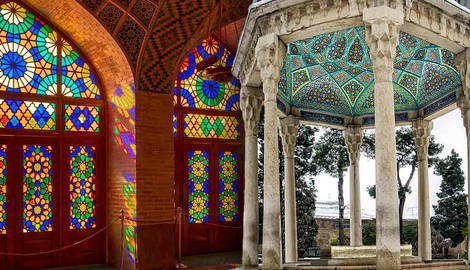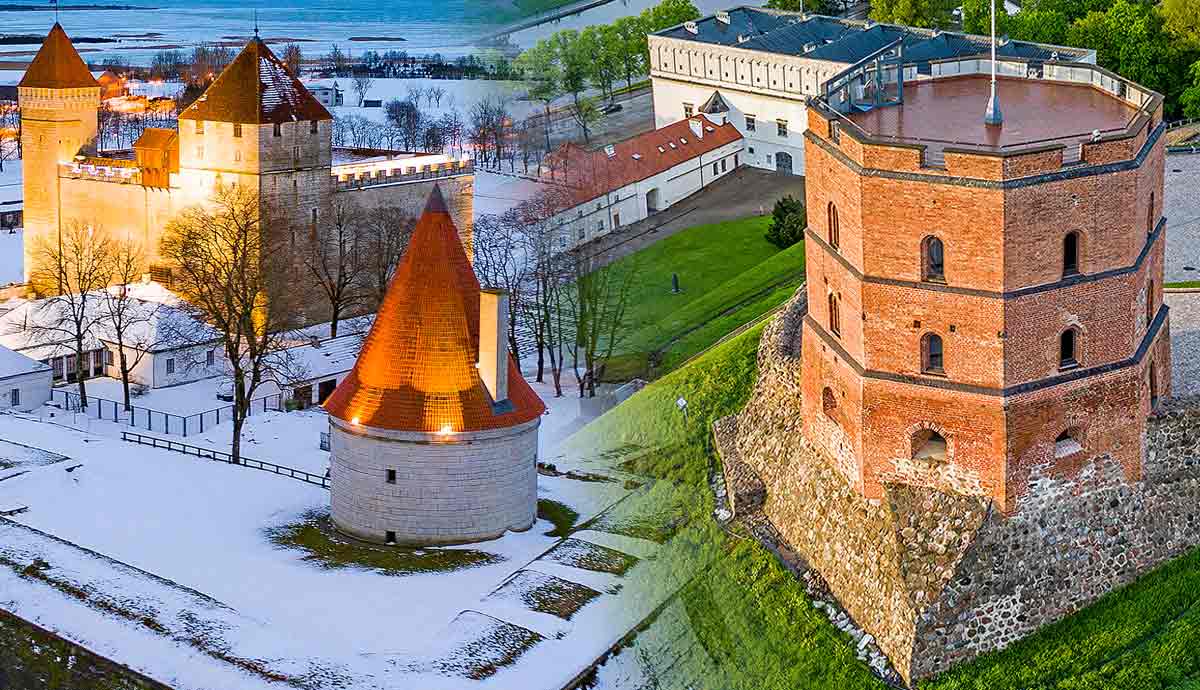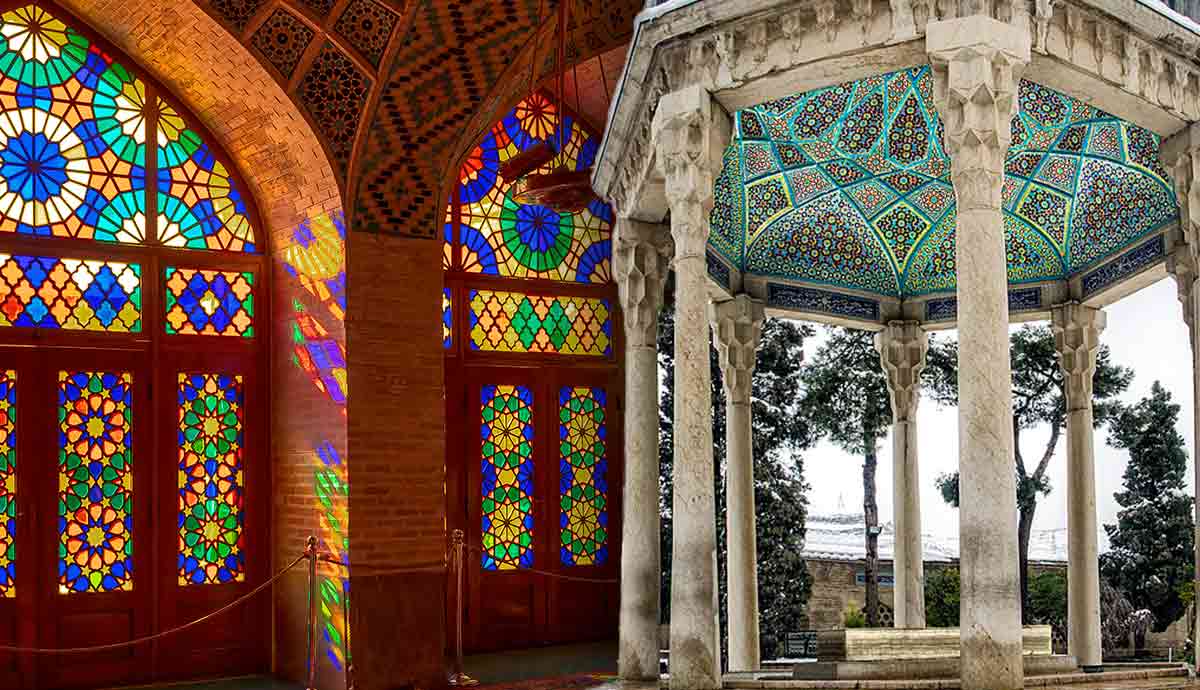
Shiraz has been at the center of Iranian art, governance, and commerce for more than 2,000 years. It was the shining pearl of the Achaemenid Empire (550 BCE to 330 BCE) and continues to be dubbed the “city of poets, wine, and flowers.” The wine may be non-alcoholic nowadays, and the empire’s glory days are long gone, yet step into Shiraz, and you’ll see that its historical and architectural splendors still shine unvarnished.
What to See in Shiraz
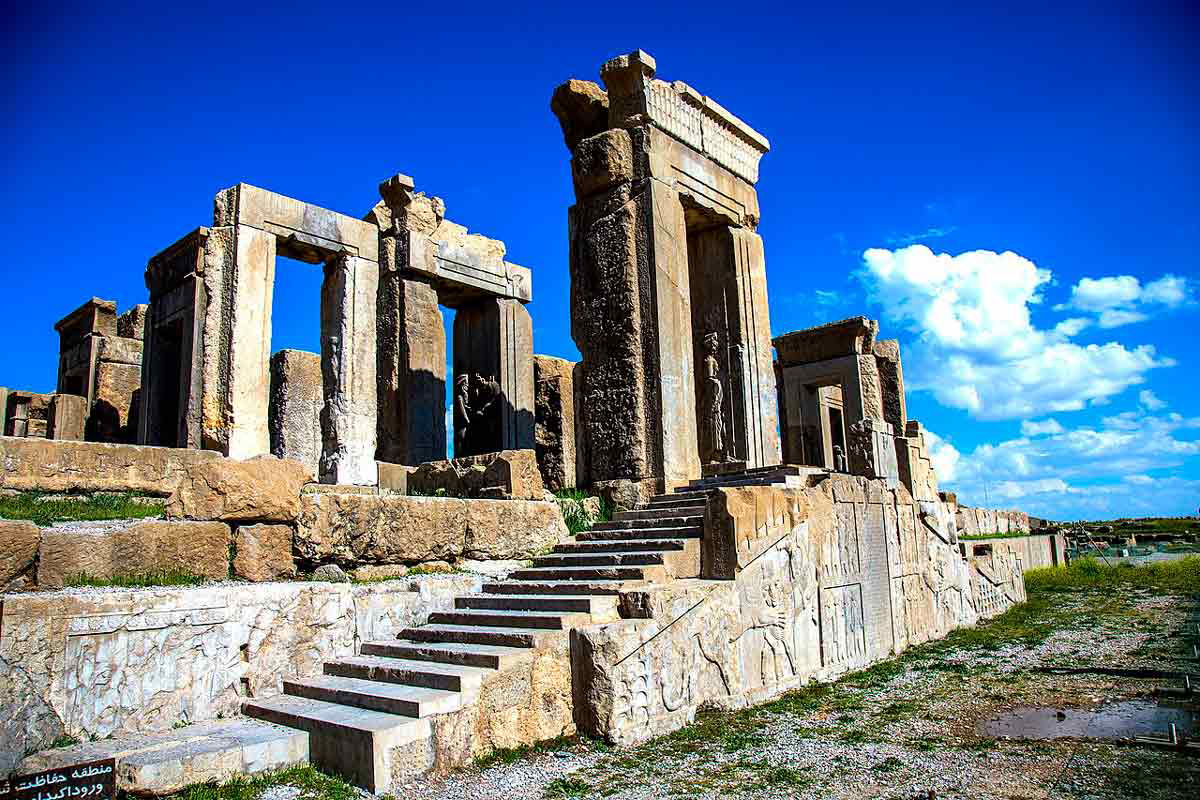
Over the last millennia, mighty empires have come and gone. Yet Shiraz never wavered throughout the country’s trials. Despite more recent tribulations, the city has retained its prominence and showcases its layered history with pride and grace.
For history enthusiasts, Shiraz has arguably no rivals in Iran. The highlights and experiences are unmatched.
Persepolis
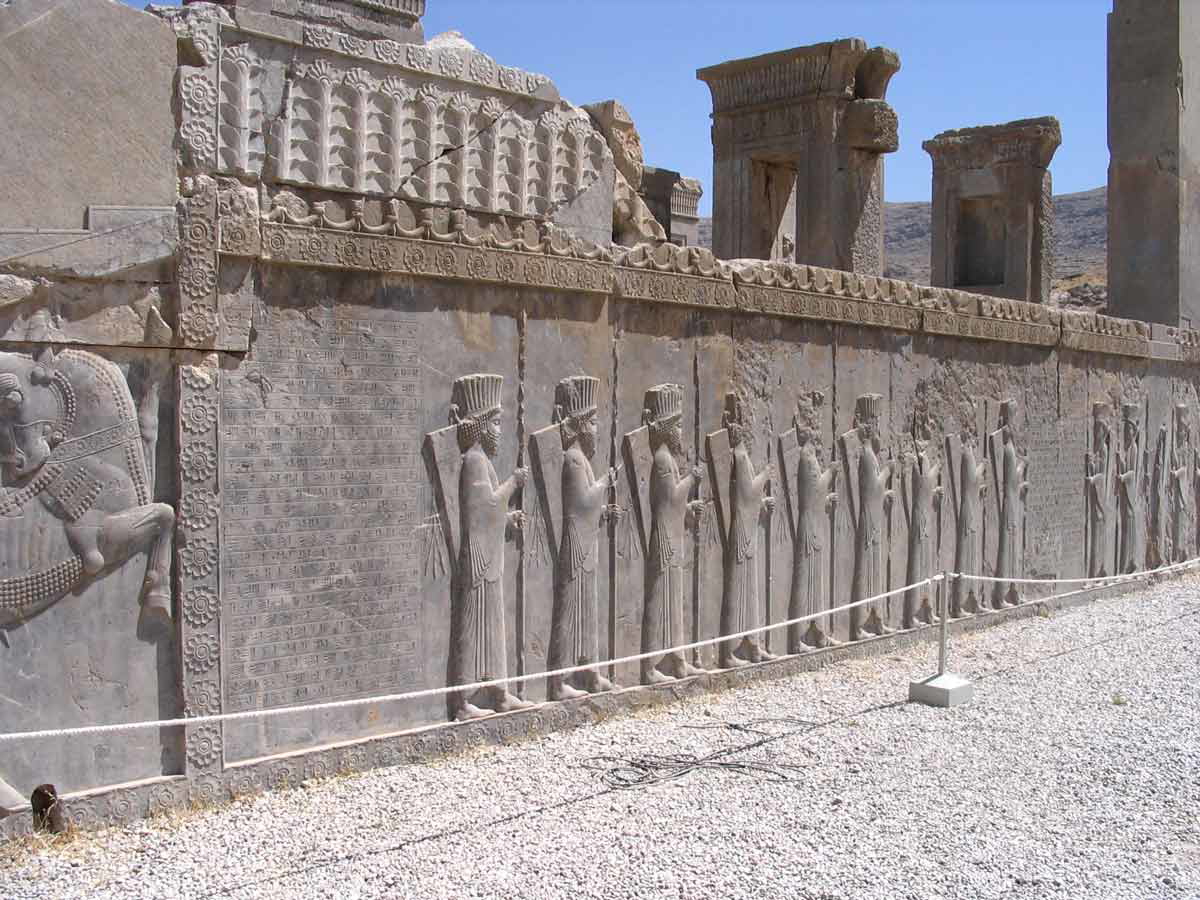
While not within Shiraz’s city limits, the ancient city of Persepolis was integral to its identity during its prime and now makes for an essential (and enriching) day trip. It is only about an hour’s drive east of the city.
Archaeological fans might just go weak at the knees at the sight of the towering columns and intricate bas-reliefs, and the imposing Gate of All Nations. This is the kind of stuff one only ever reads about in history books—to see the splendor and architectural brilliance of ancient Persia up close is an incomprehensible joy.
Don’t miss the Apadana Palace and the Tombs of Artaxerxes, carved into nearby cliffs. Read our dedicated Guide to Visiting Persepolis.
Naqsh-e Rostam
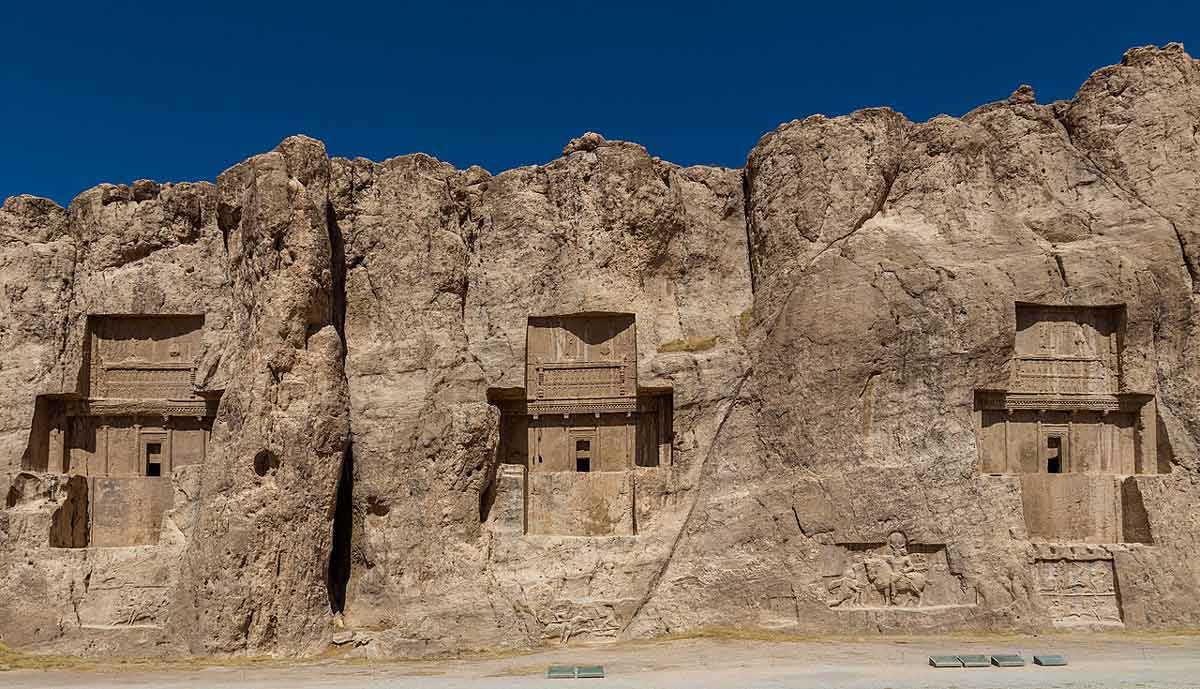
Just a short distance from Persepolis lies Naqsh-e Rostam, a necropolis housing the rock-hewn tombs of Achaemenid kings. The carvings along the sides and top of the tombs tell of history-changing moments in ancient Persia. Sassanian-era reliefs depict mighty battles and elaborate royal ceremonies. Even though the archaeological site is generally not in the best condition, it still offers a fascinating glimpse into the continuum of Persian history.
The facades may be disappointing, especially if the seemingly endless restoration works shield them from view! But considering their age (3,500 years and counting) might put it all into perspective. This is sometimes dubbed the “poor man’s Petra,” but let it be known that there is nothing remotely impoverished about this extraordinary historical treasure.
Vakil Historical Complex
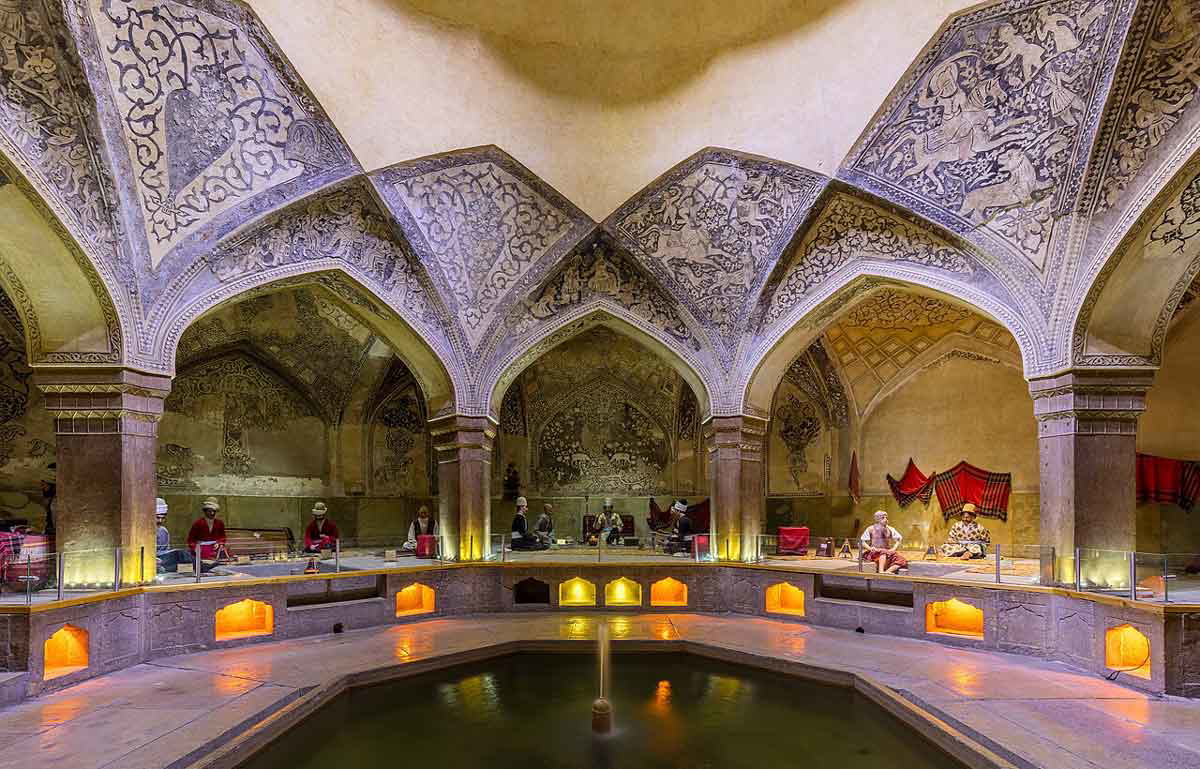
Back in the heart of Shiraz, the Vakil Complex—commissioned by Karim Khan Zand in the 18th century—houses the city’s historic bazaar. A fantastic place to explore for a couple of hours, the maze-like bazaar boasts vaulted ceilings, overstocked stands, colorful wares, and a buzzy vibe. The Vakil Bazaar isn’t just for sightseeing—it is also the perfect place to shop for authentic Persian rugs, copperware, and inlaid woodwork.
Admire the stunning tilework and wide iwans of the nearby Vakil Mosque, and discover the intricacies of traditional Persian public baths at the Vakil Bathhouse.
Nasir al-Mulk Mosque (Pink Mosque)
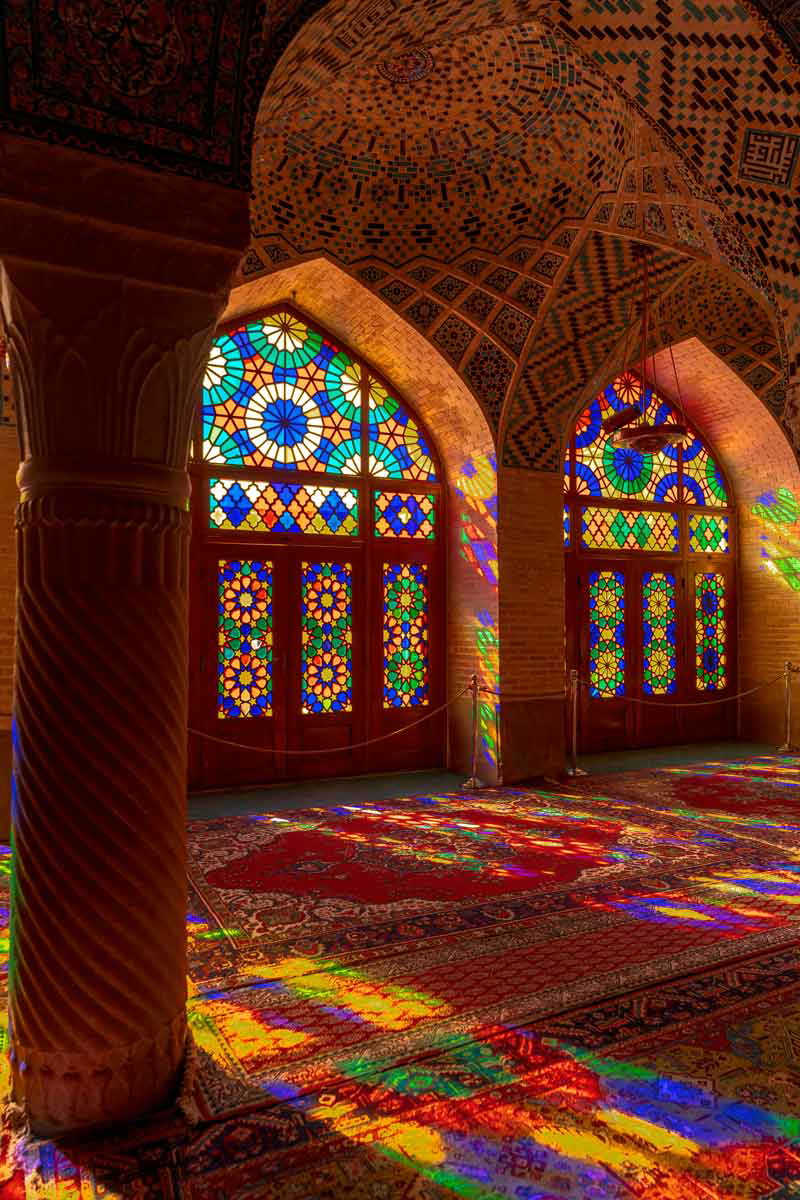
The so-called Pink Mosque of Shiraz is one of Iran’s most photographed and famous sites. It is considered a masterpiece of 19th-century Qajar architecture and features jaw-dropping stained-glass windows. As with all mosques in the Islamic world, the Pink Mosque in Iran is part spiritual and part celebration of local architecture and design. Because the eye, as they say, also has to have its part.
Visit in the morning before the sun has reached its zenith, and you’ll be privy to a spectacular show of light and color across the intricately tiled interior. Ladies, you can pick up a chador at the front gates, which you’ll need to wear while visiting the mosque.
Eram Garden
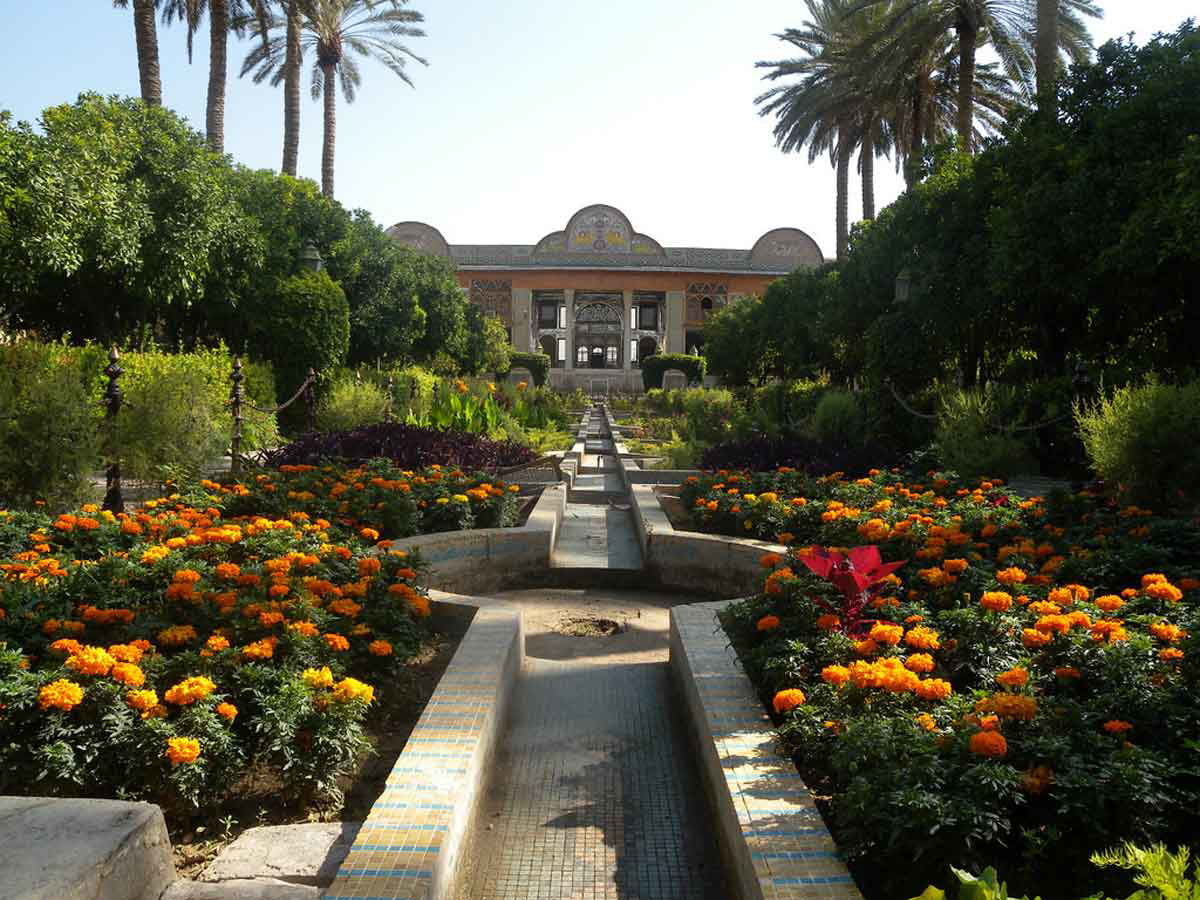
Epitomizing the beauty and ingenuity of Persian landscaping, the much-lauded Eram Garden is an absolute delight on a hot day in Shiraz (which is just about any day in Shiraz).
The traditional gardens date back to the Seljuk period (11th-14th centuries) and house a central mansion flanked by towering cypress trees. The tranquil pool, with its soothing and cooling effects, represents the Persian ideals of paradise. Eram, which is Arabic for heaven, is one of nine Persian gardens with UNESCO heritage status.
Tombs of Hafez & Saadi
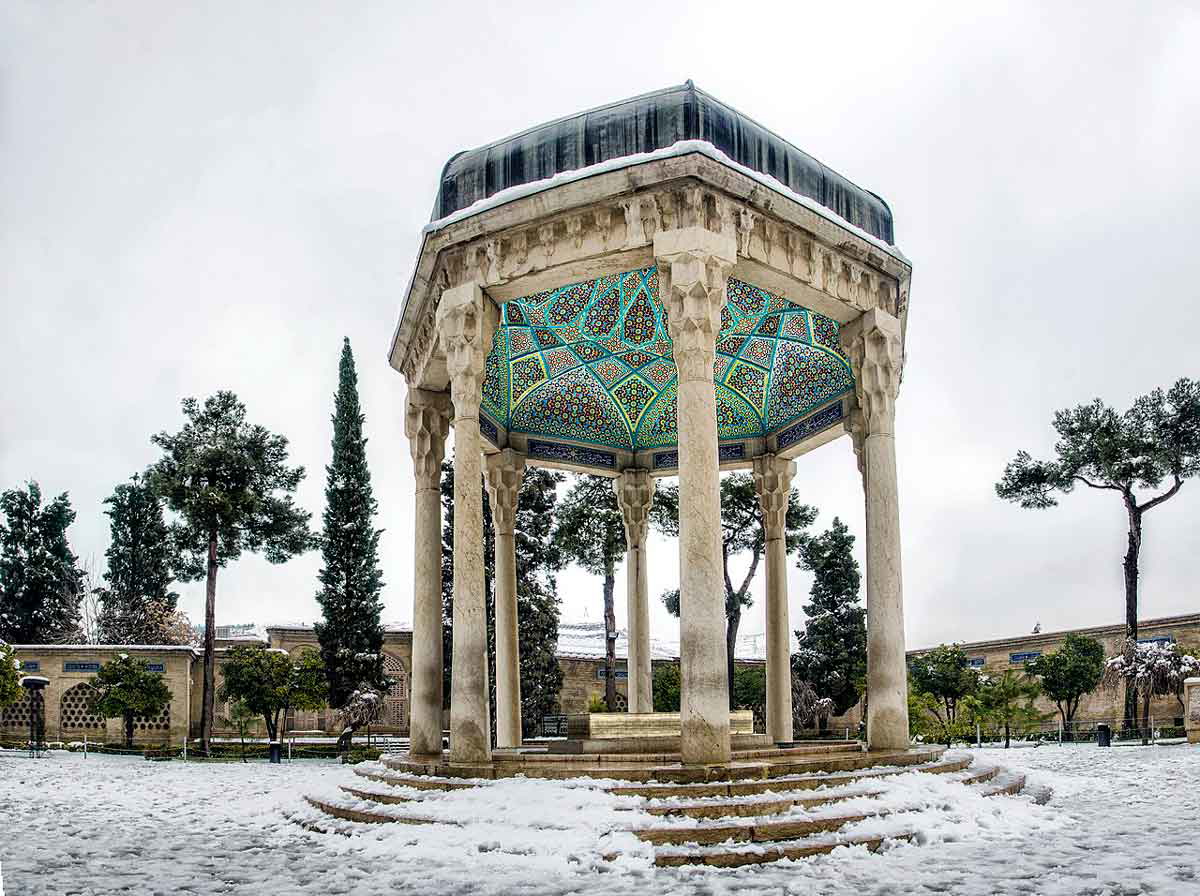
Shiraz is synonymous with many aspects of Iranian culture, none more adored within the country than poetry. The city was the birthplace and the last resting place of two of the most revered poets in Persian history—the mystical Sufi poet known as Hafez (1315-1390) and Saadi (1210-1291), a poet-philosopher whose writings on ethics and humanity are timeless. Their tombs in Shiraz are perhaps the most visited sites in the entire city, although most visitors are local.
If you find yourself in a social situation in Iran and witness a local “reciting” something, it is likely poetry from either of these literary masters.
Hafez’s tomb is surrounded by a gorgeous garden, which attracts a hefty crowd of poetry lovers—which is everyone in Iran.
Arg of Karim Khan
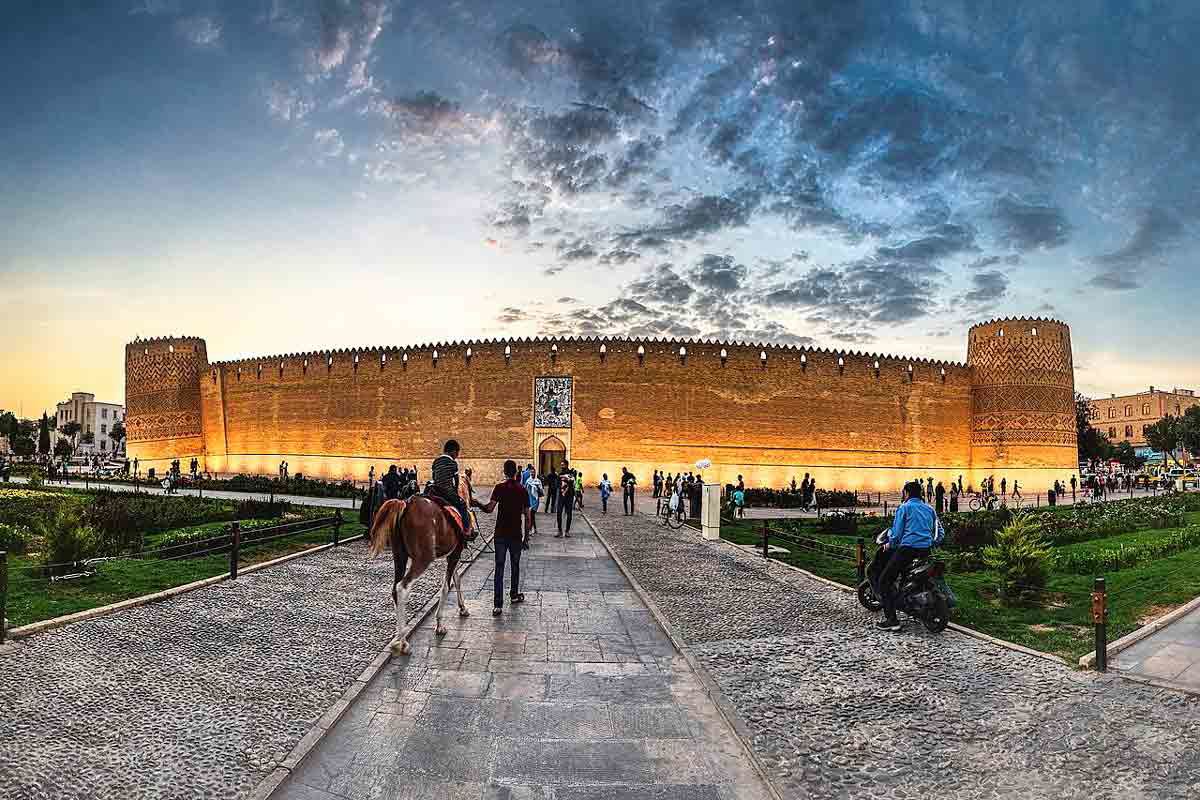
This 18th-century citadel was built by Karim Khan Zand, the founder of his eponymous dynasty. It served as his main residence and the center of his government, so boasts the tell-tale signs of a military fortress and the exquisite grandeur befitting its royal residents. The interior gardens, lined with orange trees and fountains, feel luxurious, even centuries after the fortress was repurposed for its duty.
After the fall of the Zand Dynasty, the Arg became a prison for at least two consecutive Persian empires, a crude contrast to its former splendor.
Shah Cheragh Shrine
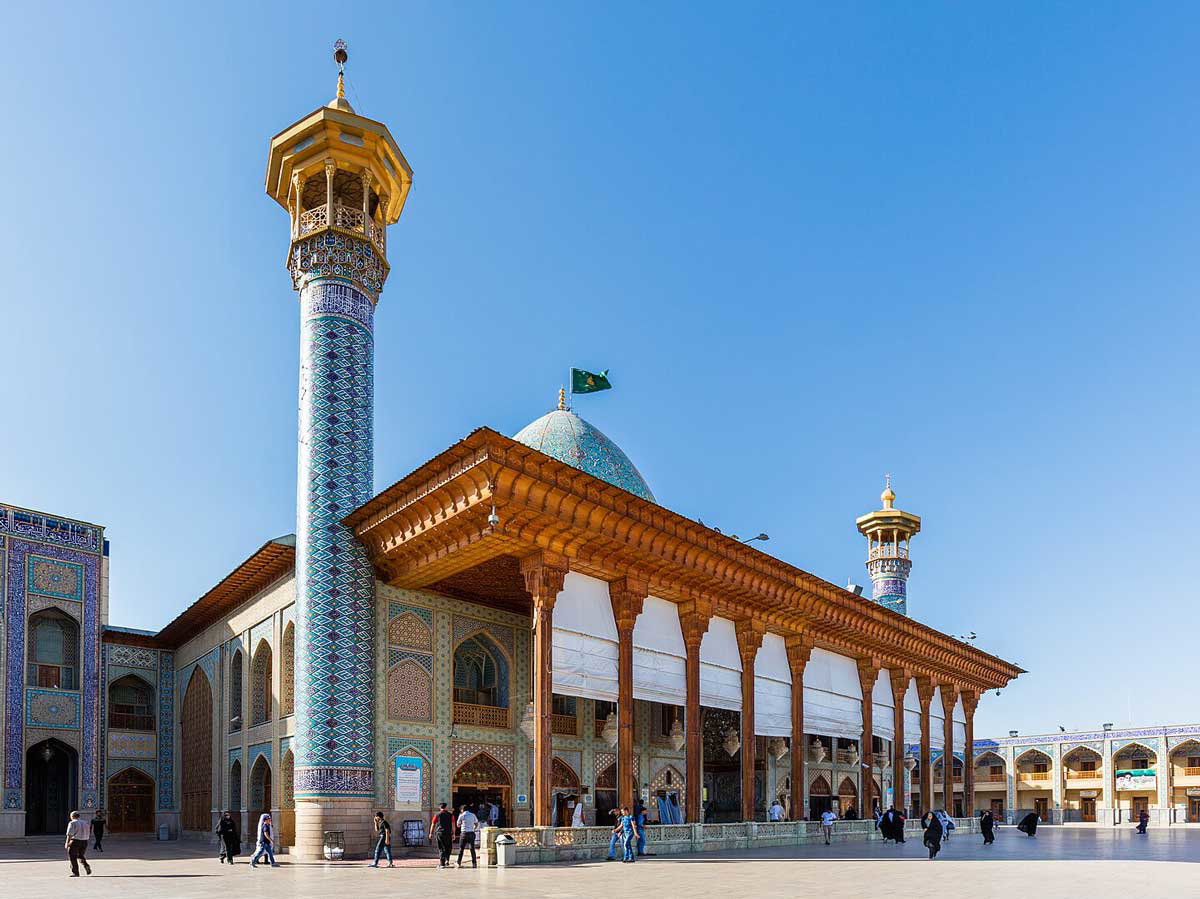
The Shah Cheragh Shrine in Shiraz is one of the city’s most beautiful historical sites and arguably the single most important religious site in all of Iran. Its name means “King of the Light,” which comes from a story about how it was discovered—legend has it that someone saw a glowing light coming from the ground and, upon digging, found the tomb of Ahmad ibn Musa, the brother of Imam Reza, a prominent figure in Shia Islam.
The inside is decorated with an astronomical number of mirror mosaics, with tiny pieces of glass that reflect light in every direction. Non-Muslims are allowed to visit the shrine but only walk into the mirrored room. You’ll catch glimpses of the room sparkle like a gazillion diamonds—extraordinary and jaw-dropping. Although you won’t be allowed to explore further, catching this exquisite glimpse is worthwhile.
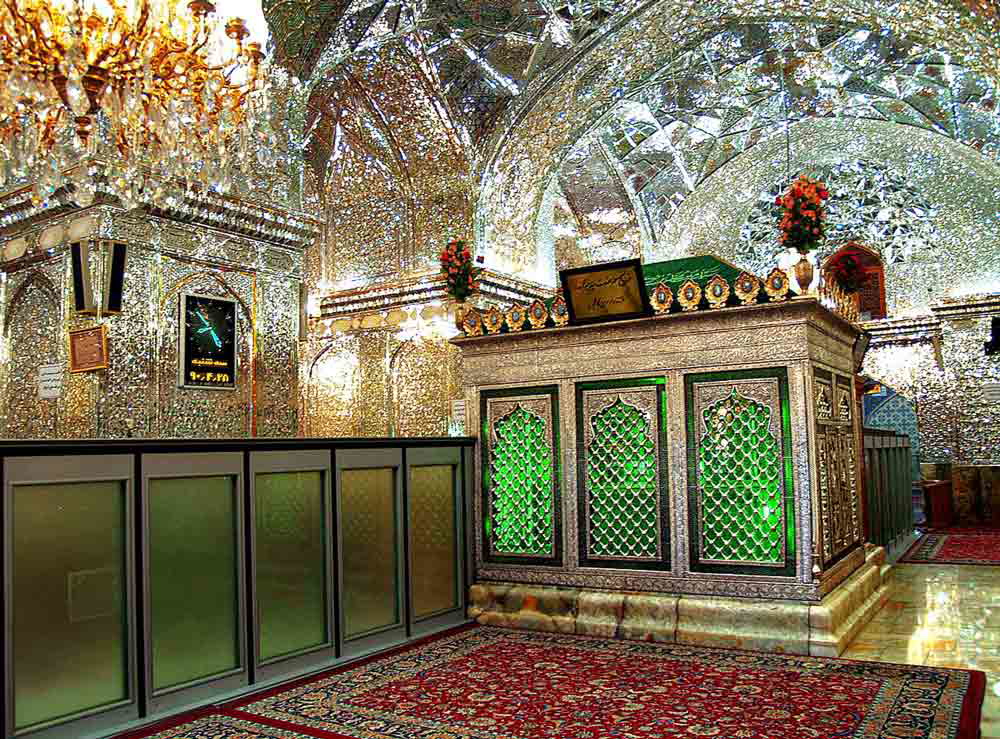
The shrine has been expanded and renovated many times since the 14th century, combining traditional Persian and Islamic architecture. It has peaceful courtyards with arched walkways where the faithful can relax and reflect. The golden dome and minarets light up at night, making it even more magical.
About Your Visit: The Shah Cheragh Shrine is Iran’s most sacred site, and strict attire and protection measures (like metal detectors at the entry) are in place. As a foreign, non-Muslim visitor, you are welcomed with open arms but only in certain areas — not the holiest. You will be allocated a friendly “guide” (usually a young scholar from the local university) to explain the history and meaning behind the most important section. If female visitors are not wearing a chador, they will be offered one at the front door. Wear knee-high, thick black stockings, as the female guards will lift your skirt to see how high your socks go. If you only have ankle socks, they’ll insist you pop into the nearest bazaar to buy some stockings — taking precious time from your visit. Nothing considered even mildly dangerous (like a lighter) will be allowed in, so only take the essentials on your visit.
Qavam House (Narenjestan-e Qavam)
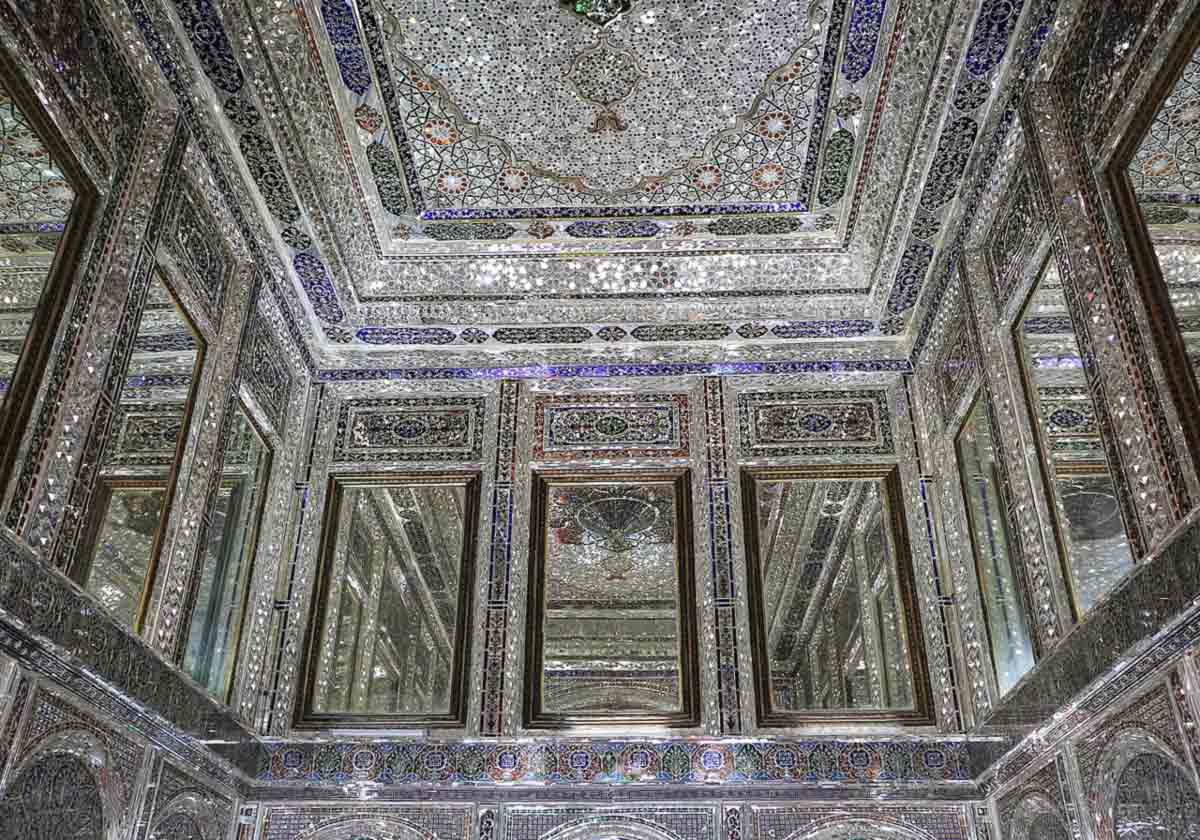
This 19th-century mansion showcases the luxury of the Qajar period and is a perfect example of Persian architecture and garden design.
Stepping into Qavam House is like stepping into a Persian fairytale. The estate is all about intricate tile work, mirrored walls, and a peaceful garden filled with orange trees and flowers. It was built by the Qavam family, a wealthy clan with a knack for creating architectural masterpieces. It is a glorious spot to soak up Shiraz’s rich history and snap some gorgeous photos, especially in spring when the garden is in full bloom. Visit on a weekday if you can to avoid tour groups.
Explore Shiraz’s Literary Legacy
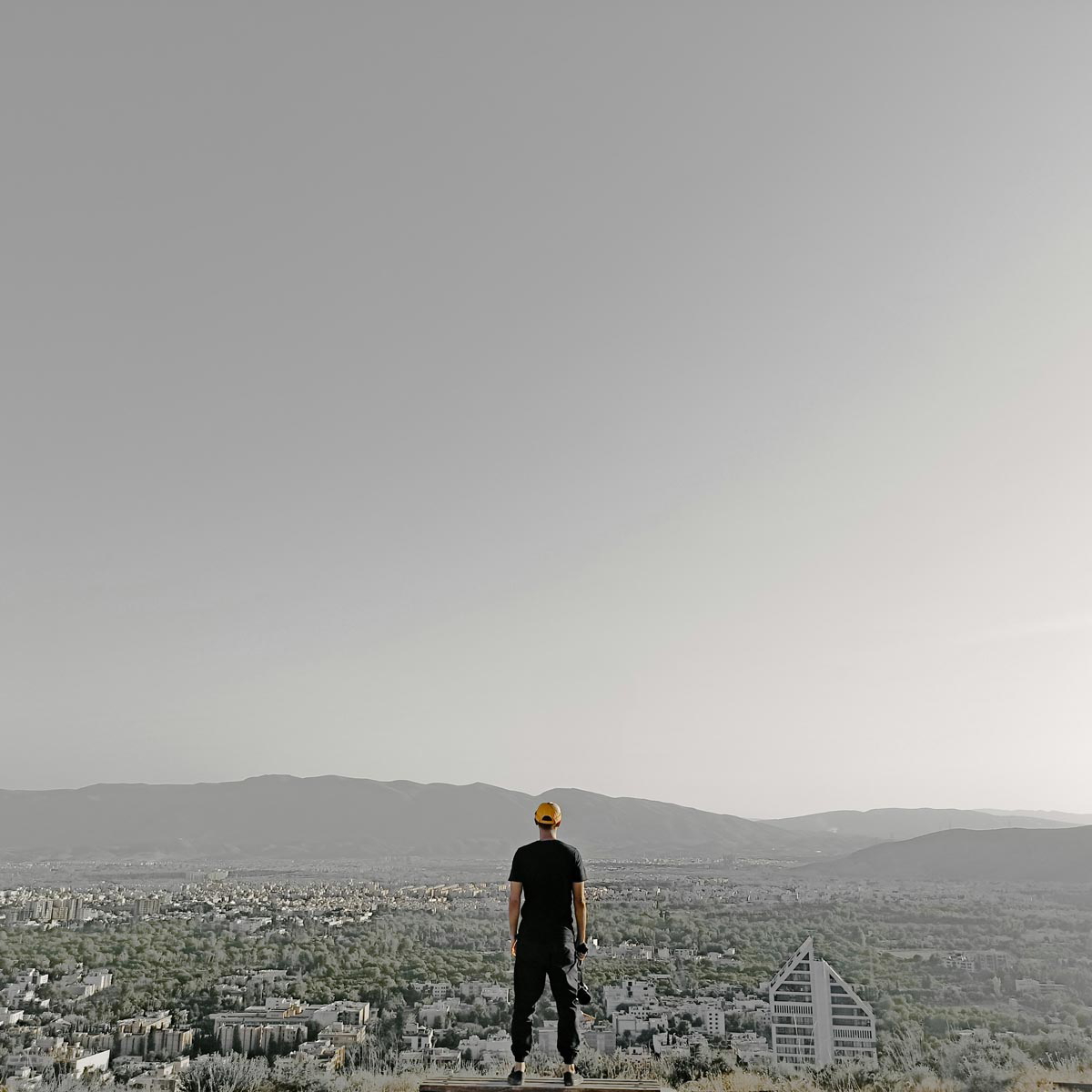
It is worth delving into Shiraz’s broader literary tradition if you are so inclined, beyond the tombs of Hafez and Saadi. Many local bookshops and libraries house centuries-old manuscripts and you might be surprised to find many English-language translations predating the Iranian Revolution.
You will no doubt meet curious and friendly locals every day, and if you wish to attend a poetry recital in one of the city’s many traditional cafes, all you need to do is simply ask for directions. Public recitals are banned in Iran, but exceptions are made, particularly in Shiraz and Isfahan. As opposed to all that Western media might lead you to believe, the true “untouchables” in Iran are Hafez and Saadi.
Practical Tips for Visiting Shiraz
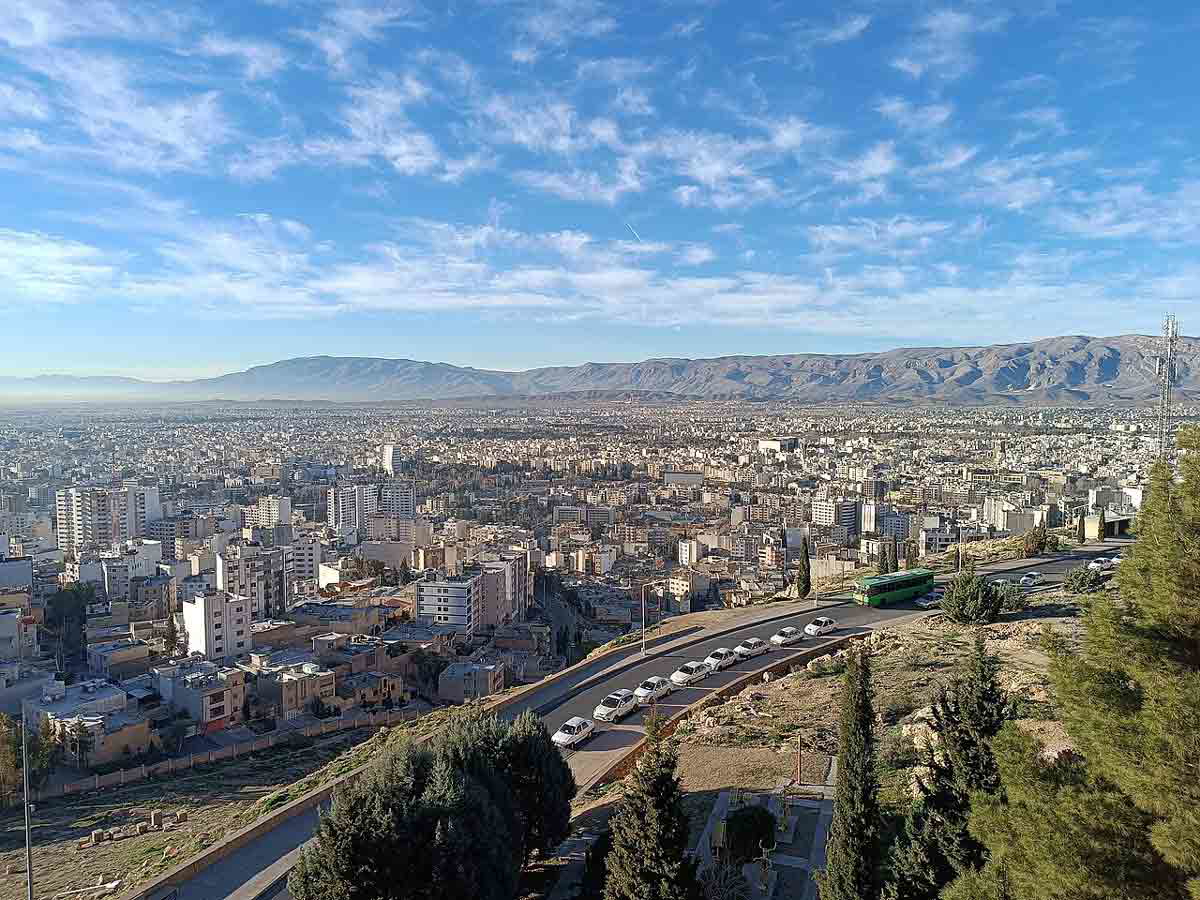
Best Time to Visit: Spring (March to May) and autumn (September to November) offer the most pleasant sightseeing weather. Summer temperatures are extreme and should be tackled with caution.
Getting Around: Taxis and ride-hailing apps like Snapp are very convenient, but walking is the best way to explore Shiraz’s historic heart.
Cultural Etiquette: Dress modestly and respect local customs, especially at religious sites. The strictest dress code—at least for women—is at the Shah Cheragh Shrine.
